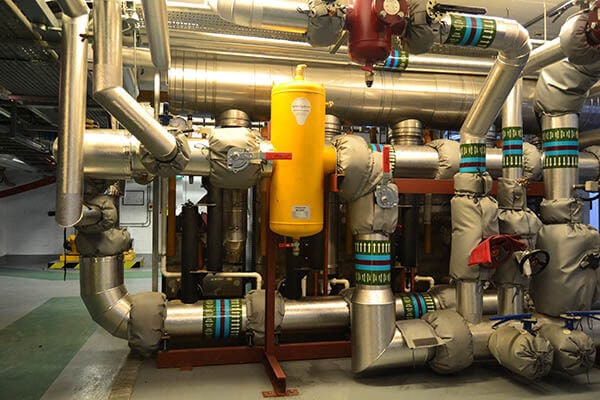Impressive 5 - 6% energy saving
Project: University of Wolverhampton | Place: Wolverhampton (United Kingdom)
In 2011, the University of Wolverhampton embarked on a multimillion-pound investment in a state-of-the-art Combined Heat and Power (CHP) system. The goal was to slash annual energy costs, reduce carbon emissions by a significant amount and future-proof the university energy network.
In two key buildings, the heating system had been performing poorly for some time. Although the MC building is one of the newest on the campus, heat transfer was poor and there were widespread system malfunctions. “We identified significant problems with contamination - filters in the chilled beams and in the air handling units were badly blocked, resulting in severely restricted flow,” explains Stephen Cocks, University of Wolverhampton’s Energy Manager.
“In MA, dated plant rooms were in real need of investment. This meant installing new boilers and ensuring that they would work alongside the older parts of the system that couldn’t be replaced. The key challenge here was to hydraulically separate the old boilers from the new and protect the plate heat exchangers.”

“Since the heavy contaminant has cleared, we’ve had no problems with flow rates, heat exchange or blockages in either building.”
Excellent reputation
“We installed Spirotech’s SpiroTrap dirt separator in 2012, and a SpiroVent Superior vacuum degasser unit one year later, due largely to the excellent reputation of the company in the UK and also as a result of an Association of University Engineers (AUE) presentation.”
Following installation, the Spirotech equipment quickly proved its worth: in MC, the contaminant was removed after only a few months. Thanks to the significantly reduced buildup, which now takes just minutes to clear, general maintenance now only takes place on a monthly basis. In MA, the system is now virtually air-free and the amount of contaminant present has been dramatically reduced.
1,000 tonnes of carbon saved
An impressive 5-6% energy saving is being realized as a direct result of the air, dirt, pressurization and degassing units being installed. The university is now emitting 1,000 tonnes of carbon less a year.
“Energy saving and greater efficiency were key to the investments we’ve made in the last three years, so we’re delighted with the amount of energy we’re saving, and heating efficiency is a key part of that.”

Achievements
- Saving 1,000 tonnes of carbon a year
- Reducing widespread system malfunction
- Maintenance drastically reduced
- Boilers are protected against dirt
- No more poor heat transfer
- Impressive energy saving